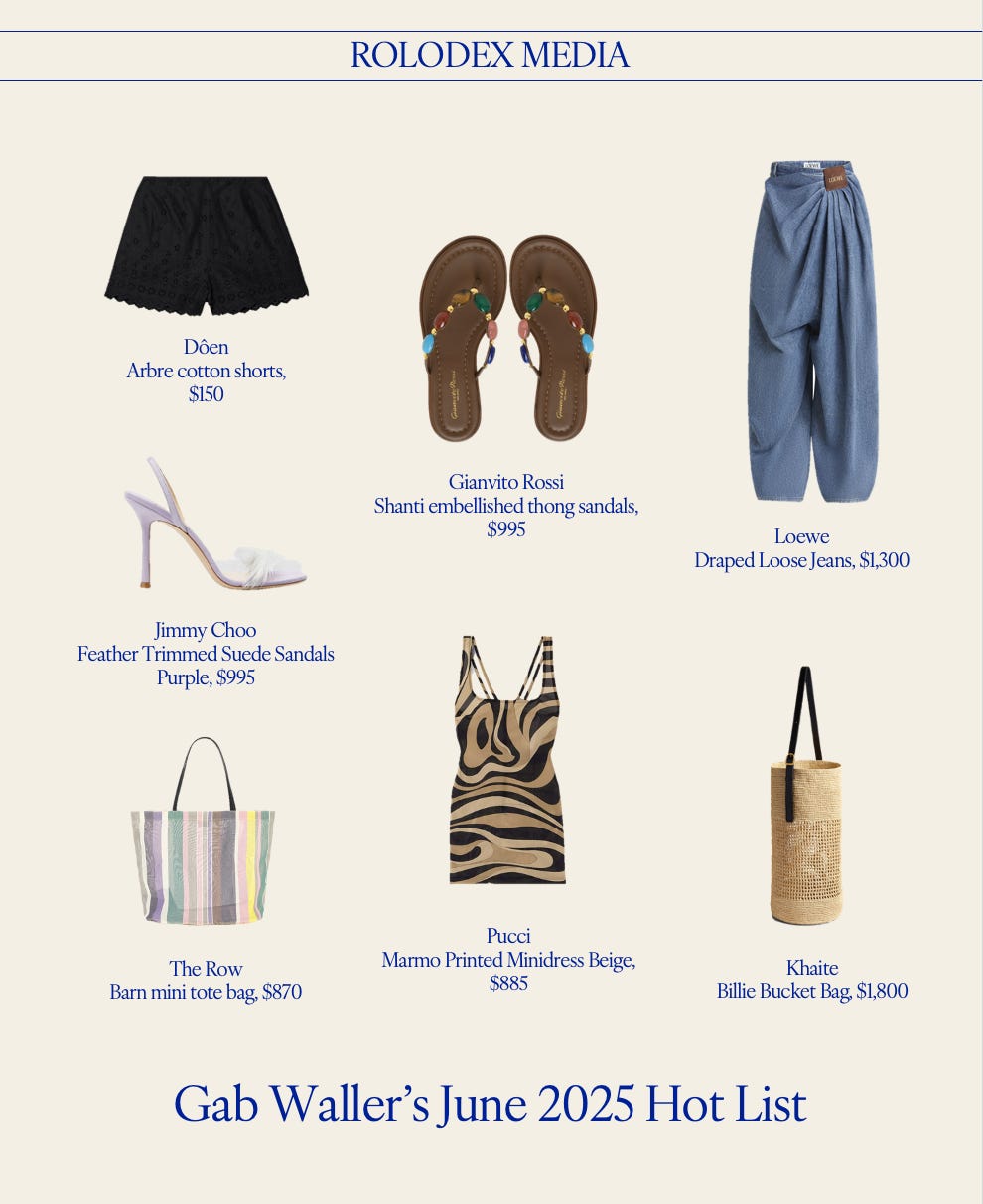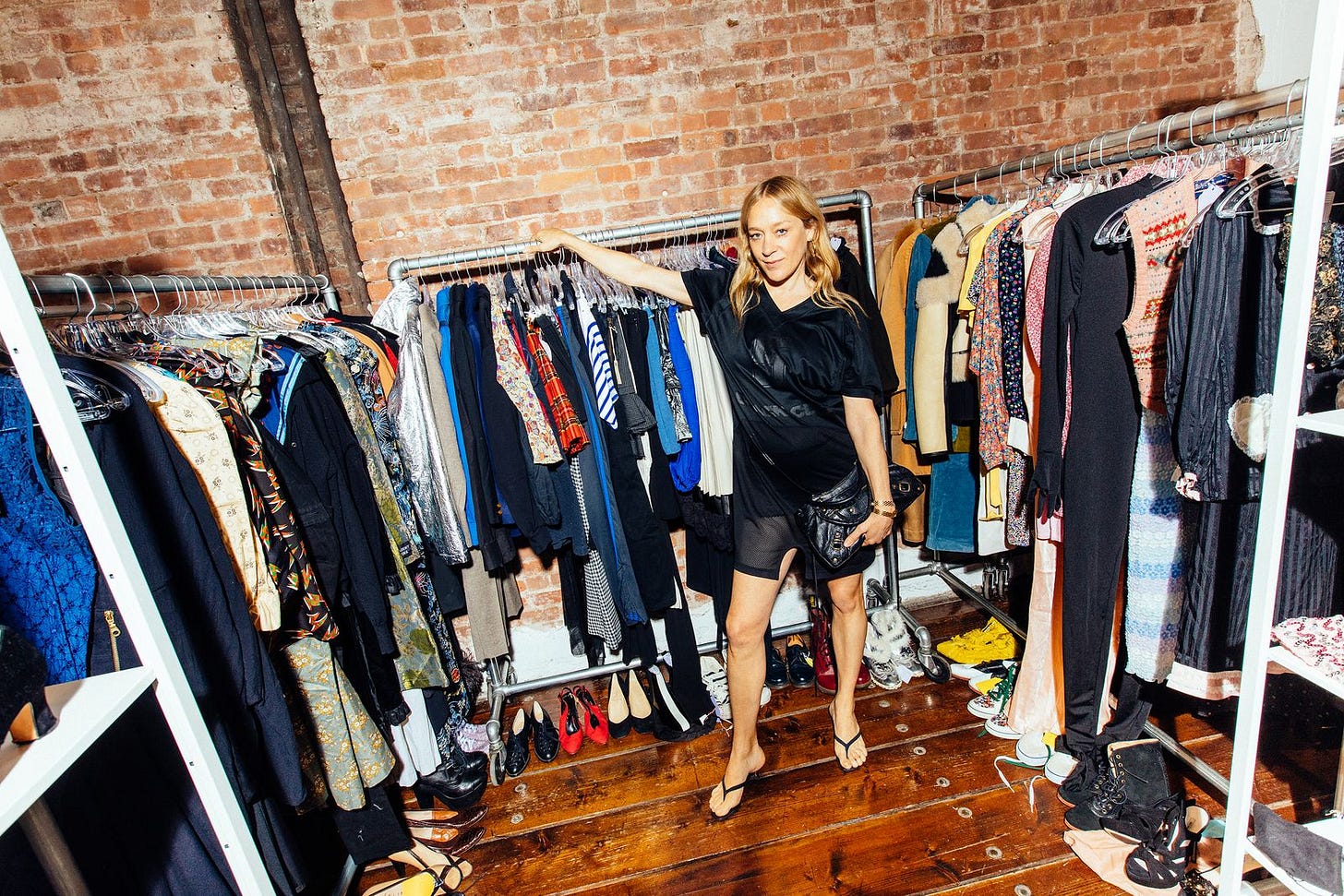How to Get What You Want (When Everyone Wants It)
Inside SourcedBy, the AI-powered platform redefining fashion sourcing and what I would do if I was Head of Growth
Written by Jade Conner
There’s a quiet kind of genius in making the impossible feel effortless. For nearly a decade, Gab Waller has been sourcing the “sold out,” tracking down the untrackable, and delivering fashion’s most elusive pieces.
A driving force behind her growth is a fundamental shift in the way we as consumers shop.
The things we want to buy find us. A friend’s vacation, a stylist’s story, an influencer’s bag in the background of a GRWM. We know we want that Pucci dress just seen on Audrey Peters for our Euro Summer vacation. The problem is, so does everyone else.
So if everyone is looking for the same thing, it tends to sell out pretty quickly. That’s when FOMO kicks in and access becomes the ultimate flex - and it’s pretty crazy just how much people are willing to pay for it.
TikTok is full of people bragging about how they got the sold out Row Margaux, or the viral Alaia mesh ballet flats. Kendall Jenner is papped on the street in a fresh off the runway Bottega fit that hasn’t even hit the stores yet. People are literally “stalking” a bag.
The people who can provide access to in demand, hard to find pieces - the sourcers, the stylists, curators - are becoming as powerful as the brands themselves. They’re no longer just middlemen between the brand and the consumer - they’re the new arbiters of access, taste, and what’s cool.
Which means? More sourcing.
After 7 years, Gab has found some real pain points in the industry. Behind every item she sources, the sheer logistics of documenting, tracking, invoicing and recording payments makes it so much more time consuming. She receives 100+ requests and DMs a day, but is only able to fulfil about 30% of the requests that come in. No off-the-shelf tool could match the specificity, speed, or scale Gab needs to meet her client’s demands.
Her team currently juggles up to six different platforms, including Instagram DMs, Asana, Excel, WhatsApp, Xero, and Monday.com. Because none of these things talk to each other, it’s inevitable that things will slip through the cracks.
So how is she fixing the problems with the current operating model whilst also scaling for the shift in how we shop?
Meet SourcedBy: a single platform that unifies sourcing, logistics, invoicing, and client communication - designed specifically for people in fashion.
Gab is leveraging her years of experience in the luxury sourcing market to build a tech company that solves all her problems, enabling her to scale and respond to 100% of inbounds, not just 30%.
The platform will onboard freelance shoppers and sourcers all over the world for a one-time fee of $100, giving them access to a universal dashboard complete with client requests. Sourcers make a commission for every item they successfully find.
The beta version of their website went live one week ago, check it out: SourcedBy Website. They’ve also just made some great hires: Alisha Kumar as COO and Scott Davis as CTO.
Gab Waller’s June 2025 Hot List
If I was the Head of Growth for SourcedBy, here are the things I would be focusing on:
1. Become a Full-Stack Sourcing Firm
Let’s say you believe LLMs and AI can now automate a lot of the work behind sourcing. There are two ways to act on that.
One: you build a tool. A sleek, efficient backend that handles admin, invoicing, logistics, tracking, and sell it to the sourcers who need it. From the outside, that looks like what SourcedBy is currently doing.
Two: you build a company. Instead of enabling sourcers, you become the sourcing firm. Staff it with AI agents and compete with existing sources. You own the interface, the service, and the transaction.
Gab Waller and SourcedBy could reimagine what a digitally native, full-stack AI sourcing firm looks like:
AI agents do the heavy lifting - from sourcing, tracking inventory and pricing, to generating invoices and handling logistics
A small team of high EQ, well-connected people lead client relationships. They aren’t sourcers - they’re relationship architects. Tastemakers. Industry insiders. Their value isn’t in finding the item, it’s in knowing what the customer wants before they do.
It’s faster. It’s more scalable. It’s the difference between renting tools to the system… and rebuilding the system entirely.
Yes, this model replaces sourcers as we traditionally know them. But it’s not about cutting people out. It’s about putting them where they create the most value. Think of it like what happened in the travel industry: when online booking platforms took over the mechanics of searching flights and hotels, great agents didn’t disappear, they evolved. The best ones became luxury travel concierges, focusing on white-glove service, not busywork.
2. Leverage marketing to make SourcedBy go viral from day one
Sourcedby benefits from the psychology of sold-out. This shouldn’t just power the product, it should also be used to power the growth loop too.
Gab and her team could do this by:
Build waitlists around items, not just access
Create public waitlists for high-demand items, where you can move up by referring others or by becoming a VIP client or sourcer
Allow influencers or stylists to create sourcing storefronts with their favourite items of the season - a real, on the ground look of what might be trending in 3 months time
Add a sourcing signature to every item - make the end product very instagrammable. Could be a custom QR tag on the packaging that shows where the item came from and it’s back story
3. Build Campaigns Around Iconic Finds
A fun idea I had was each season, SourcedBy curates its most iconic, impossible, or unbelievable finds and tells the story behind them.
Example: The Milan Edit
“This season’s most iconic find? A vintage Fendi Baguette pulled from the wardrobe of a 78-year-old former Vogue Italia editor. Sourced by one of our Milan-based freelancers in under 48 hours, wrapped in silk, and shipped to LA for a client’s 30th birthday.”
Other examples: The Paris Apartment Drop, The Tokyo Vault, The New York Closet Cleanout
Sourcedby could also collab with celebrities / taste makers / fashion insiders looking to do closet clean outs.
Take Chloe Sevigny’s recent NYC closet sale.
Sevigny told another shopper, who nabbed a brandless sweater, “Oh this is the first sweater that I wore when I started flirting with my husband.”
People want to hear the stories behind the clothes. Not just what it is, but where it’s been, who wore it, and why it mattered. There’s also something very cool about wearing a dress and saying: “I got it from the SourcedBy x Chloe Sevigny closet sale”.
4. White-Labeling SourcedBy’s tech stack and infrastructure
What SourcedBy is building isn’t just a luxury solution. You could do this for any industry, especially one dominated by slow-moving incumbents. Instead of selling to the dinosaurs, you could make them extinct.
There are thousands of sectors that rely on bespoke fulfillment, high-value requests, or fractured tools. The common denominator? A human receives a request… then juggles spreadsheets, Slack threads, Google Drive folders, and invoices just to make it happen.
SourcedBy is building a better backend for that chaos.
Imagine white-labelling this to industries like:
Interior design – where sourcing furniture, lighting, rugs, and finishes is still a manual, disjointed process
Events and weddings – high-stakes, high-touch planning where logistics and sourcing are everything
Corporate gifting and brand partnerships – where large organisations need premium, personalised products sourced at scale
Auction houses - where clients often request rare, high-value items, and advisors rely on fragmented tools to manage consignments, private sales, sourcing, authentication, and delivery
Each of these industries shares the same DNA:
High-value requests
Emotionally-driven purchases
Manual, fragmented backend systems
Clients who know what they want but don’t want to search for it
5. Productise the network
The real power play is this: as SourcedBy gets better at reading and tracking data, it learns:
What people are asking for (demand signals)
Where those items live (supply mapping)
Who gets them first (access relationships)
How pricing moves (market dynamics)
That data becomes a valuable product in itself. A real-time pulse on taste, scarcity, and spending patterns. Suddenly, you’re not just fulfilling desire and demand. You’re forecasting it… and I don’t need to tell you how powerful that is.













